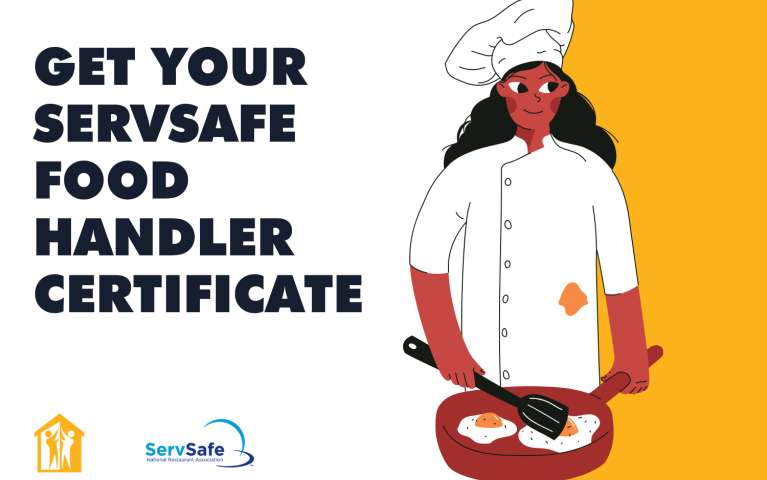The Ultimate Guide to Becoming a Certified ServSafe Food Handler in Your State
The Ultimate Guide to Becoming a Certified ServSafe Food Handler in Your State
Blog Article
Comprehensive Food Handlers Training for Health and Security
In today's quickly progressing food solution landscape, thorough food trainers training has emerged as a crucial element for making sure hygiene and security. By instilling essential techniques associated with hand hygiene, food storage space, and sanitation, this training not just alleviates the risk of foodborne diseases but likewise reinforces conformity with regulatory requirements. The ramifications of such training prolong past simple conformity; they discuss public health and consumer trust. The efficiency of these training programs can differ dramatically. What factors really identify their success in promoting a society of safety and security?
Significance of Food Safety Training

Additionally, food safety and security training aids to make certain that staff members recognize present laws and guidelines, which are important for preserving operational licenses and avoiding expensive fines. Normal training sessions likewise act as a platform for strengthening best practices, therefore minimizing the likelihood of human mistake, which typically acts as a leading reason of food contamination.
Additionally, purchasing food safety and security training can improve a facility's reputation, as customers progressively prioritize eating experiences that show high security standards. Such aggressive steps not just safeguard consumers however also contribute to the long-term success of food businesses. In summary, extensive food safety training is an indispensable aspect of food solution procedures, straight impacting both public health and company sustainability.
Key Concepts of Hygiene
Maintaining high requirements of health is crucial in any type of food managing setting to avoid contamination and make sure the safety of customers. The vital concepts of health include several crucial practices that food trainers have to regularly apply.
First, hand hygiene is extremely important; food handlers must clean their hands thoroughly with soap and water prior to and after taking care of food, along with after making use of the washroom or touching any potentially contaminated surface areas. Tools and surface areas must be on a regular basis cleansed and sterilized to eliminate pathogens. This includes utensils, reducing boards, and countertops, which need to be maintained in a tidy problem.


Appropriate food storage is also important; raw foods ought to be stored separately from cooked or ready-to-eat items to prevent cross-contamination. servsafe food handler. Additionally, preserving proper temperature level controls is critical; disposable things need to be maintained safe temperature levels to hinder bacterial development
Lastly, individual health can not be forgotten. Food handlers need to wear clean clothing, use hair restraints, and stay clear of functioning when ill. By adhering to these crucial principles of hygiene, food trainers can substantially reduce the danger of foodborne diseases and promote a much safer eating experience for all consumers.
Usual Foodborne Illnesses
Although several foodborne illnesses can be protected against with appropriate health and secure food dealing with practices, they continue to be a considerable public health worry. Foodborne virus can bring about a selection of health problems, ranging from mild gastrointestinal distress to extreme difficulties and even death.
Common foodborne diseases include salmonellosis, triggered by Salmonella germs, frequently connected to undercooked poultry and eggs. Another widespread health problem is listeriosis, related to unpasteurized dairy items and ready-to-eat meats, which can be specifically hazardous for immunocompromised individuals and pregnant ladies. Norovirus, frequently gotten from contaminated food or surface areas, is known for its quick spread and capacity to cause episodes in communal settings.
Escherichia coli (E. coli) infection, especially linked with undercooked ground beef and polluted produce, can result in severe stomach cramps and kidney failing in many cases. In addition, Clostridium perfringens, commonly discovered in large quantities of food that are improperly saved, can cause gastrointestinal disorder with signs and symptoms showing up quickly after consumption.
Recognizing these ailments is crucial for food handlers, as recognition can dramatically decrease the risk of contamination and safeguard public health. Correct education and training are crucial components in combating foodborne conditions.
Best Practices for Food Handling
Effective food managing techniques are important in preventing the spread of foodborne diseases. Correct hand health is important; food trainers should wash their hands thoroughly with soap and water before and after dealing with food, particularly raw meat or poultry. This simple activity dramatically decreases the danger of cross-contamination
Second of all, preserving suitable food storage temperatures is important. Perishable products ought to be kept at or below 40 ° F(4 ° C) to prevent microbial development. In addition, prepared foods must be kept over 140 ° F(60 ° C) till served.
Thirdly, guaranteeing cleanliness of surfaces and equipment is essential. Routinely sterilize kitchen counters, cutting boards, and utensils, specifically after preparing raw foods. Usage separate cutting boards for raw and ready-to-eat foods to even more lessen contamination dangers.
Moreover, when preparing food, it is crucial to follow the concept of "initial in, view it now first out" (FIFO) to manage inventory successfully and minimize perishing. Finally, always stick and review to food product labels for risk-free cooking temperature levels and managing instructions. By implementing these best techniques, food trainers can substantially boost food safety and safeguard public health and wellness.
Executing a Safety And Security Society
Creating a safety and security culture within a food handling atmosphere is essential for cultivating a dedication to food safety among all team member. This society highlights the significance of food safety and security as a common responsibility, motivating staff members to prioritize health methods consistently.
To execute a safety culture, organizations should begin by giving extensive training that addresses food handling procedures, potential hazards, and the significance of individual hygiene. Training sessions must be interactive and customized to the Our site specific roles of team member, guaranteeing importance and interaction.
Furthermore, management plays a critical duty in establishing this culture. Management ought to design risk-free techniques and connect the relevance of food safety routinely. Recognizing and rewarding employees who support safety criteria can additionally strengthen these behaviors.
In addition, open interaction networks need to be developed, allowing personnel to report safety and security worries without concern of effect. Normal safety and security audits and comments sessions can help determine areas for renovation and reinforce responsibility.
Inevitably, cultivating a safety and security society not only boosts conformity with food safety guidelines however additionally protects public health and wellness, cultivates employee morale, and adds to the overall success of the food managing facility.
Verdict
In verdict, thorough food handlers training plays a pivotal duty in advertising hygiene and safety and security within food service establishments. By outfitting employees with essential expertise concerning food security principles, common foodborne diseases, and finest techniques for handling food, such training significantly minimizes health and wellness dangers. Cultivating a society of security enhances the facility's track record and lines up with customer expectations for high safety and security requirements, ultimately contributing to public health and wellness defense and the total success of the food solution market.
In today's swiftly progressing food solution landscape, comprehensive food trainers training has actually emerged see page as a crucial part for ensuring hygiene and safety and security.Food safety training is important for preserving high requirements in food handling and prep work, with studies suggesting that appropriate training can reduce foodborne diseases by up to 30%. In recap, comprehensive food safety training is an essential element of food solution operations, directly affecting both public wellness and organization sustainability.

Report this page